Bold claims and lofty promises are a hallmark of the supplement industry today. From fat burners to pre-workouts, many products promise to deliver extraordinary results in a timely manner, from “shredding fat” to “packing on lean muscle.” The hard part for consumers is separating the merit from the marketing.
Mass gainers are no different than other supplements out there. While they have a clearly stated goal of helping people pack on pounds, it’s critical to dive into how they work, if and why they’re effective, and what the general population and athletes alike should consider if they’re interested in adding mass gainers to their supplement plan.
What are Mass Gainers?
Mass gainers, also commonly called “weight gainers”, are a type of protein powder designed specifically (and unsurprisingly) to help you gain weight. With their ample calorie counts, they aim to help add muscle in ways that ordinary protein supplements can’t, and are often marketed as a solution for so-called “hardgainers.” With that in mind, let’s take a deeper look into what this kind of supplement really has to offer and whether it’s right for you.
Common Formulations & Nutritional Content
While mass gainer products do bear some resemblance to many common protein powders, there are some key distinctions that separate their formulation and function.
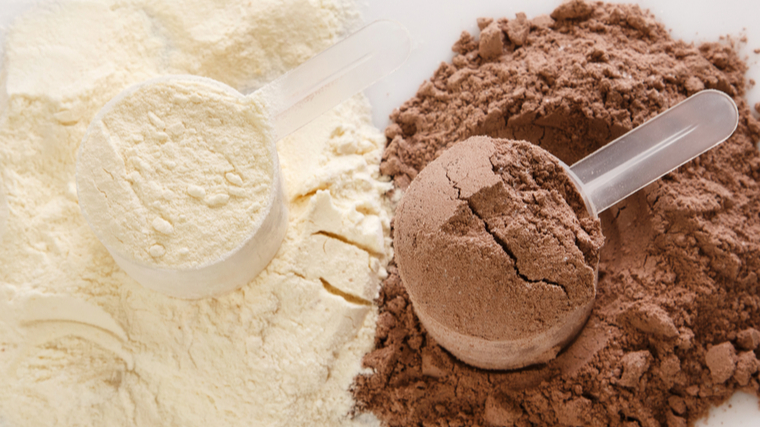
Mass gainer products will almost always contain far more calories, protein, and carbohydrates than standard protein powders. These extra nutrients are critical for adding body mass.
Caloric Content
The defining feature of all mass gainers is the high caloric content, which is essential for gaining weight. Many mass gainers contain upwards of three times more calories per serving than a standard protein powder. The high number of calories is the driving factor behind the results these products solicit, but more isn’t always better — the line between maintenance and gain is a tight one.
Carbohydrate Content
Unlike most standard powders that get most of their total calories from protein, the extra caloric content in mass gainers comes predominantly from added carbohydrates. Maltodextrin, corn syrup, and other sugary extras can be found in abundance here as they are easily digested without making the powder too thick or unmixable.
Fat & Other Additives
While not present in such dense quantities as carbohydrates, the fat content in most mass gainers is markedly higher than standard protein powders, mostly coming in the form of dairy additives. A high amount of cholesterol and sodium are also worth mentioning, although that tends to be part and parcel of any dietary product with a high calorie count.
Added Nutrients
The hallmark feature of a good mass gainer is a high calorie count, but that doesn’t necessarily mean they’re all nutritionally vacant. Some brands include beneficial additives such as vitamins, BCAAs, creatine monohydrate, etc., that help offer a more complete dietary package.
A Primer on Energy Balance
Before we look into the effectiveness of mass gainers, it’s important to understand their purpose as a supplement, and to do that requires an overview of the metabolic processes involved in weight loss or gain.
Energy balance is pretty straightforward. Between natural body functions and external activity, you expend a certain number of calories per day. If you take in more calories than you expend, you will gain weight. If you take in fewer, you will lose weight.

The quality of weight you gain or lose depends largely on your macronutrient composition and type of activity, while the quantity of weight change is almost entirely dependent on caloric intake. The thesis is simple; the more calories you take in, the more weight you’ll gain. And this is the main selling point of any mass gainer supplement.
However, more isn’t always more. Adding substantially more calories or protein to your diet may not always produce better results; there may be serious diminishing returns if weight gained is more likely to be from body fat than lean muscle. (1)
Does this mean that mass gainers are a redundant supplement that has no place in anyone’s cabinet? Not at all. Now that we understand what they are and how the body processes weight gain and loss, let’s look at who can benefit from the use of a mass gainer.
Related: Best Macros Calculator for Tracking Muscle Gain and Fat Loss
The Benefits of Mass Gainers
Mass gainers have one substantial benefit; they offer a convenient method of consuming a high number of calories, with decent macro splits, quickly. For anyone struggling to gain weight due to logistics, budget, or biology, mass gainers offer a viable solution. That is, assuming a substantial amount of calories in your diet still come from whole food sources.
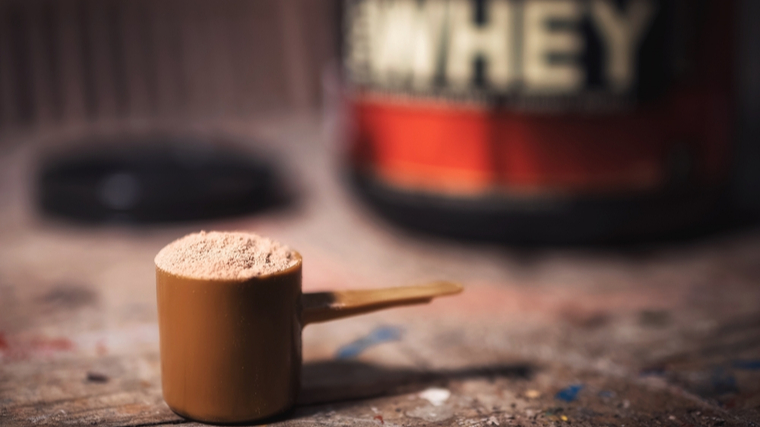
If you struggle to hit your calorie goals every day due to financial or time constraints, but still want to make sure you’re eating enough to make progress in the gym or on the scale, a mass gainer could be helpful for you. The calorie content per dollar is generally a great deal, and they work wonders if ingested shortly after an intense workout when the body is primed to utilize protein and calories in a productive way.
It is also worth touching on the “hardgainer” stereotype — a person whose metabolism is uncommonly high and does not respond as expected to moderate increases in caloric intake. While some regard this as a myth, it does have some credibility in the literature. Greg Nuckols, M.A. in Sport Science and editor of the MASS Research Review, shared his thoughts on the topic:
“When people go into caloric surpluses, there are compensations that occur as the body tries to stay more-or-less at maintenance,” Nuckols says. “There may be slight increases in metabolic rate, but the larger compensations come in the form of increases in non-exercise activity thermogenesis (NEAT). Some people have small increases in NEAT in a caloric surplus, and other people have large increases. These compensatory increases in NEAT might just make it harder to actually achieve a notable caloric surplus, especially if you don’t have a big appetite.”
While this topic has not been exhaustively studied and researched, Nuckols’ sentiment does lend some credence to the idea that a select portion of the population may have issues gaining weight despite following an appropriate “bulking” plan. If you find yourself in that position, a mass gainer may be especially helpful for you.
The Stronger by Science Podcast and the MASS Research Review can be found here.
Who Doesn’t Need Mass Gainers
While mass gainers offer cheap calories, there are some factors worth considering. No over-the-counter supplement can magically add lean mass on its own. If you take the marketing at face value, you’ll likely end up disappointed. Mass gainers are a high-calorie protein and carbohydrate source, not a magic bullet.
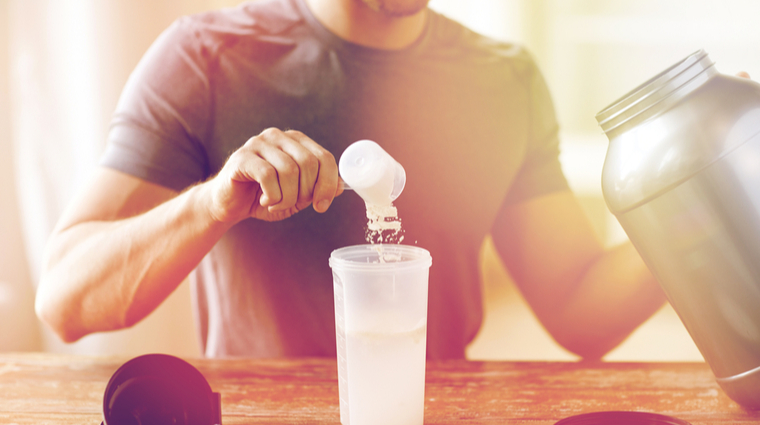
Furthermore, the ingredients of most common mass gainers do contain some red flags for some populations. A large portion of the calorie content does tend to come from maltodextrin and other additives. This may be a dealbreaker for anyone with diabetes or those wishing to avoid high Glycemic Index (GI) sugars. It also goes without saying that mass gainers are generally incompatible with a ketogenic diet, which shuns carbs in favor of high-protein, high-fat macros.
Common additives also include egg, soy, and whey products that may be problematic for the lactose intolerant. Many also boast a relatively high-fat content, which slows the absorption of protein and thus may be suboptimal when taken shortly after a training session.
Product Recommendations
Mass gainers can be found in the product line of almost every major supplement company in one form or another. If you’re in the market for a cheap, convenient calorie source, these selections stand out from the crowd.
Simple & Clean — Transparent Labs Mass Gainer
A lot of supplement companies these days boast about just how much is in each of their products, making for an extensive and sometimes intimidating list of ingredients for anyone not thoroughly versed in nutritional science. Transparent Labs goes in the other direction, opting to deliver a product that does a lot with a little.
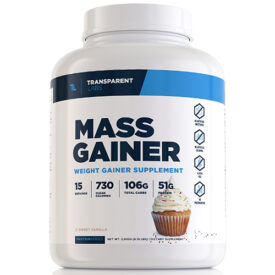
With nothing artificial, whey from New Zealand, a good amount of fiber, and little sugar, this mass gainer will satisfy most athletes. It's a clean mass gainer that focuses on simplicity over added bells and whistles.
The macronutrient breakdown is solid, containing 53 grams protein and 109g of carbs in a 730 calorie serving. The big selling point here is what it doesn’t have — no artificial sugars, preservatives, or dyes. A high fiber content from oat flour and sweet potato powder is the icing on the cake. Transparent Labs Mass Gainer is a great option for anyone who values purity.
For the First-Timers — Isopure Mass Protein
If you’ve never taken a mass gainer supplement before and aren’t sure if jumping into a thousand-calorie shake is right for you, the Isopure Mass Protein is a good starting point. At just 600 calories per two-scoop serving, Isopure is relatively light on calorie content, especially compared to other industry mainstays.
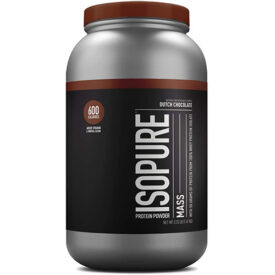
Isopure Mass Protein should be an ideal mass gainer for those just starting to bulk up. At only 600 calories, it's a less hefty shake compared to other products on the market, but also has some impressive add-ons like BCAAs and added micronutrients.
However, the formulation is the real draw. Isopure Mass Protein is both lactose and gluten-free, while also boasting strong BCAA content and a long list of added micronutrients to cover as many bases as possible. The lower calories and lack of creatine content do leave something to be desired, but the Isopure Mass Protein is definitely a safe pickup if you’ve never used a mass gainer before.
Added Vitamins & Nutrients — Optimum Nutrition Serious Mass
Optimum Nutrition Serious Mass has everything you need out of a gainer supplement and a little more. The nutrition profile is solid, with a strong protein content, high carbs, and a hefty 1,250 calorie count. It is also extremely light on fat content for how many calories it offers, something not commonly found among its competitors.
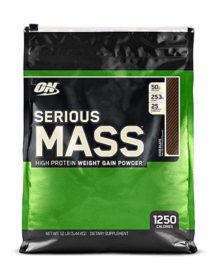
Very inexpensive and full of vitamins and minerals, Serious Mass can fill nutritional needs and calorie goals.
A high-calorie content paired with low fat does mean that this product is comparatively very sugary. While it’s difficult to shop around for a high-calorie supplement that doesn’t contain a lot of simple sugar additives, if you’re trying to minimize sugar intake as much as possible you may want to look elsewhere.
Related: When Is The Best Time to Drink a Protein Shake?
Wrapping Up
No supplement truly lives up to the promises made on the label on their own. They claim you’ll run faster, shred fat off in record time, and, in the case of mass gainers, pack on pounds of lean muscle quickly.
Under a more acute lens, mass gainer supplements are essentially ultra-high-calorie protein powders that can contain some additional bells and whistles. However, just because they aren’t a magic one-size-fits all solution to your nutritional goals doesn’t mean there isn’t a place for them.
For those who need to hit an exorbitant number of calories per day, whether it’s to fuel high-intensity training or finally make the scale budge, mass gainers can be a highly effective tool. A healthy dose of protein and a heaping portion of calories in each scoop can help get your diet where it needs to be, as long as you understand what you’re buying.
References
-
Morton RW, Murphy KT, McKellar SR, Schoenfeld BJ, Henselmans M, Helms E, Aragon AA, Devries MC, Banfield L, Krieger JW, Phillips SM. A systematic review, meta-analysis and meta-regression of the effect of protein supplementation on resistance training-induced gains in muscle mass and strength in healthy adults. Br J Sports Med. 2018 Mar;52(6):376-384. doi: 10.1136/bjsports-2017-097608. Epub 2017 Jul 11. Erratum in: Br J Sports Med. 2020 Oct;54(19):e7. PMID: 28698222; PMCID: PMC5867436.
Featured image: BLACKDAY/Shutterstock